A few months ago, I experienced the same issue with my (one year old!) HE washer. After doing hours of research, the machine is now fresh and better than new. Hope this info will be helpful if you’re struggling with this problem or if you’re looking to keep your HE washer in fresh-smelling condition.
There are a few possibilities, but here are the 3 top I discovered through my research…
*Maytag (my machine’s manufacturer) said the number one cause of odor is from using the wrong detergent or using too much detergent. The wrong type causes too many suds. The more suds = the more that gets stuck in the nooks and crannies where mold can live and breed. Use detergent that specifically states it’s safe for use in an HE machine. There is a little HE emblem on the detergent bottle or box that clearly states it’s safe or not. And the machine requires a very small amount when using the correct detergent.
This goes for anything you’re putting into the machine; fabric softener, color safe bleach, etc.
Step 2. Clean the rubber seal: Pay special attention to the rubber seal around the door while cleaning the washer…
Pull back the rubber to expose what’s hiding and growing underneath. Have a look at what was hiding in the rubber seal of my washer…
Step 3. Remove the detergent tray and sterilize: Since the odor is sometimes caused by too many suds, this area needs your attention. When I removed my detergent tray it looked terrible…
Make sure you take the tray apart for a complete cleaning. Here’s a look at the inside…
I soaked the tray and its pieces in hot, hot water with a small amount of dish soap…
After 15 minutes, wipe it clean with bleach spray and a rag. Good as new!…
Step 4: Clean the inside of the detergent compartment: Don’t stop with just sanitizing the detergent tray. You’ll also want to clean inside the detergent compartment. I was shocked to see the inside of mine…
If you’re having a tough time getting your cleaning solution back there, try using a spray bottle. I used clorox clean-up bleach spray to reach the back and into the nooks and crannies up top. See these nooks in the top of the detergent compartment…
Using a toothbrush, I scrubbed that area clean. After spraying into the compartment, let it sit for about 15 minutes before wiping clean again.
Step 5: Clean the inside of your washer door: Using white vinegar or bleach, clean the inside of the washer door. Sometimes you can see residue built up here – but most times you can’t even tell anything is lurking. You’ll be surprised how much cleaner the door looks and the amount of scum that was hiding on the door.
Step 6: Run a clean cycle on the machine: Once you’ve completed steps 1-5, add 1/4 cup of bleach or white vinegar to the detergent tray and run the machine on its clean washer cycle. Most HE machines have a “clean cycle” or “affresh cycle”….
My clean cycle runs for 1 hour 5 minutes with very hot water. I checked in occasionally to see what was going on inside the machine and there was some aggressive water slushing. There also seemed to be a lot more water than you would have in the drum while washing clothing. So, I would suggest using your clean cycle as opposed to a regular hot water cycle.Step 7: Completely wipe down the inside of the washer again: Once the clean cycle has finished, open the door and thoroughly wipe down the inside of the washer again. Why? Here is the washcloth used to wipe out the inside of the rubber seal AFTER the first clean cycle…
Again, gross! Couldn’t believe there was still dirt in the ring after the above steps.
Step 8: Air out your washer and detergent tray overnight: Once the washer is clean and dry inside, leave the door and detergent compartment door open to completely air out any water residue that was missed or is hiding in areas you can’t reach.
After airing overnight, smell the washer with a fresh morning nose to see if the odor still exists. If the odor is still there, you may want to do 1 or 2 additional clean cycles to completely remove all of the residue. Don’t worry – the smell will go away. If you haven’t run your washer through this cleaning process before, you may need to do this 2-3 times to remove all of that built-up residue from the internal parts of the machine. I could tell a huge difference after one clean cycle and one overnight air dry. But it took a few additional cleanings to make it go away completely. Don’t give up too quickly!
*Make sure your machine is level…
If the machine isn’t level, it may not be draining completely.
*Consult your owner’s manual to find out if the manufacturer has specific cleaning advice for you.
*If your machine has a filter or drain opening that’s easily accessible, that area may need to be inspected and cleaned. In some machines, items can get caught in the filter or drain area. A few reports I read mentioned coins or debris being stuck down there. And those items can be the mold and mildew culprit.
*Bring in a professional or handy person you know to help solve the issue.
*Contact the maker of your machine. Since the printing of your owner’s manual, the company may have new or better tips for you to try. Or they may work with you even further to help solve the problem.
*Use less soap! After owning a machine for a while or doing laundry for years, many of us don’t measure out detergent before adding. We aren’t as precise as we were when we first started doing laundry. This isn’t good for an HE machine. Especially because the suds can be one of the main culprits for mold and mildew. Make sure you read through your owner’s manual completely to understand exactly how much detergent the machine requires. Sometimes for large loads you may need only a few tablespoons of detergent. My owner’s manual gives you an example of what types of clothing should be washed on each cycle…and how much detergent you should use in those cases.They are called HE for a reason = less water. Because they need less water, chances are the machine needs less soap.
*Use only HE detergent. I’ve heard that powdered detergent creates fewer suds for this modern washing machine, as opposed to liquid. But liquid is still fine to use. just use a smaller amount.*If possible, use detergent free from dyes and perfumes. Those additional additives may add more residue to the washing machine…
*If you are using a detergent that says it is “2x the cleaning power“, you may need to use even less of it.
*If you are concerned that you’re adding too much detergent, but don’t want to cut back, consider adding the extra rinse cycle to each load. This ensures clothing is getting rid of the additional soap residue, as well as any residue inside the machine…
*Sanitize your machine each month – religiously.
*Leave the washer door and soap dispenser drawer open between loads. This allows the machine to air dry. When the door is closed, there is less opportunity for the machine to dry out. That moist atmosphere is prime breeding for mold and mildew.
*Use powdered bleach for colors and liquid bleach for whites. This helps with mold suppression.Hope this post is helpful! As always, I learn from my readers…if you have additional tips or would like to share your HE washer stories with others – feel free to leave a comment!


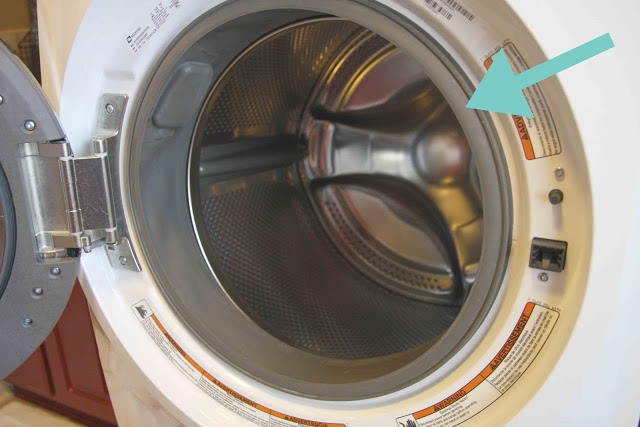

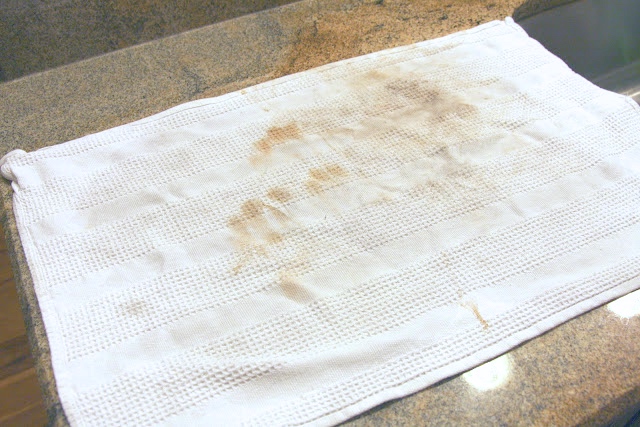

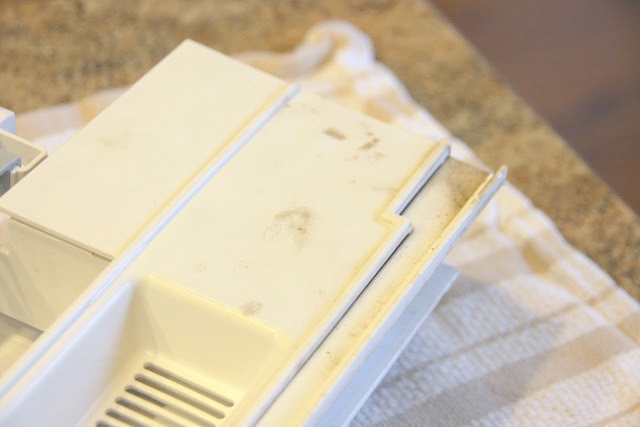
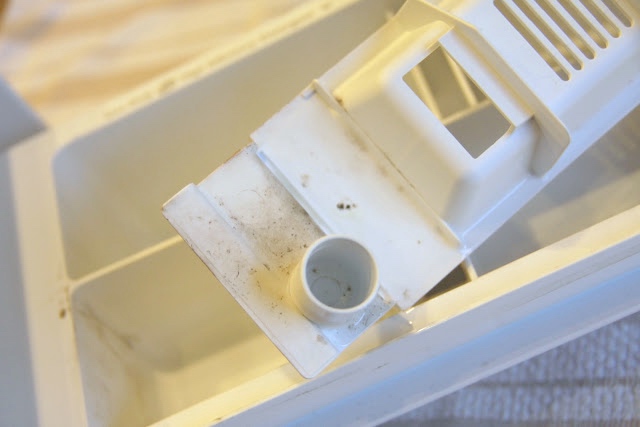




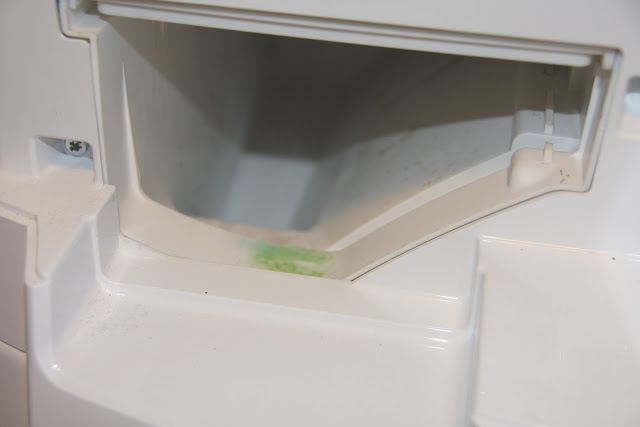

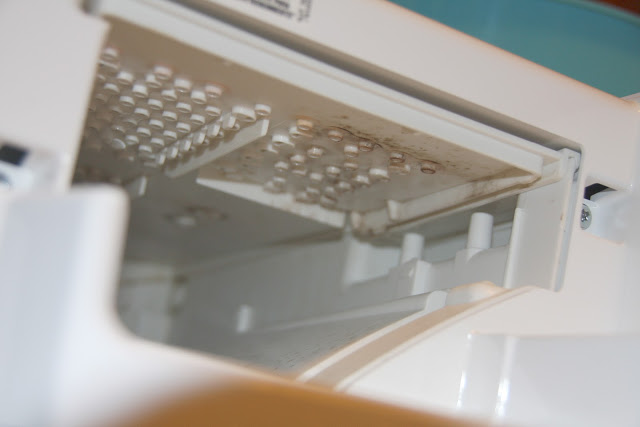

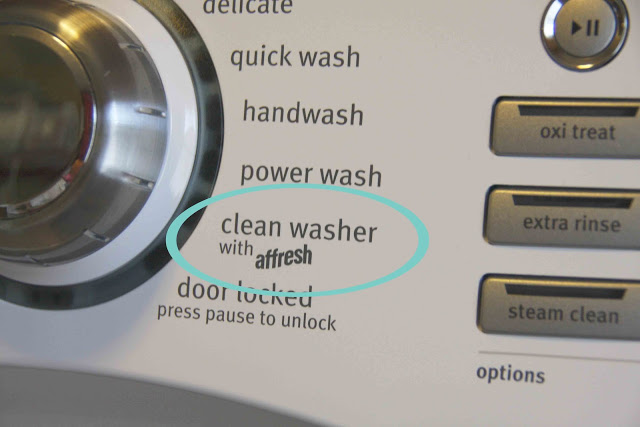
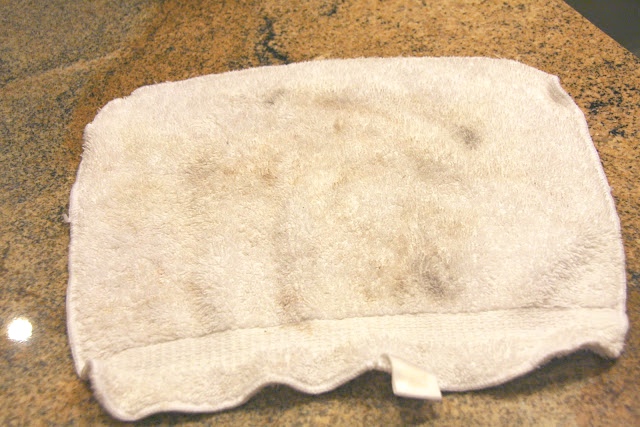




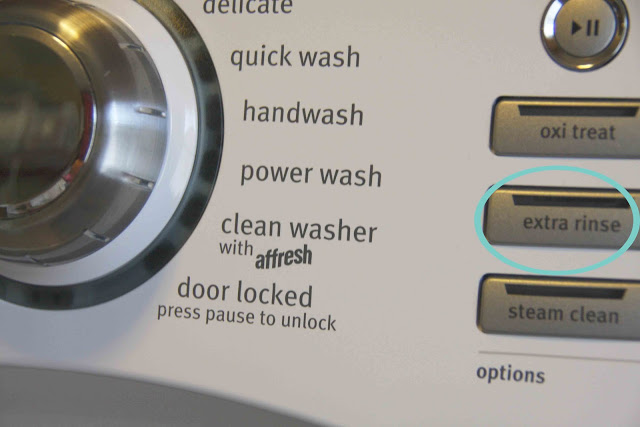

This is very helpful! I will be pinning it so I can come back to it. 🙂
hi ashley!
i am so glad you found this post helpful! and thank you for pinning it!
xo,
samantha 🙂
Got to love the new invention that is the front load washer. We bought one a few months ago and I have done all the steps you posted at least once or twice a month. I have to leave the door open while not in use until it is all dry inside. I don't think my clothes come out smelling as good as they use to. I miss that fresh laundry smell in my closet. It is still there but not like it was with my top loader. They say that the front loader saves energy but I don't see how when you have to run a basket cleaning load twice a month for an hour and a half. I so wish I had my top loader back. Oh well. It could be worse. I could be washing everything by hand. Crazy thing is, I love doing laundry. Crazy, I know. 🙂
Thanks for this post. I thought it was only my front loader and my excessive OCD.
oh my goodness – I KNOW! you basically took the words out of my mouth.
funny, i had originally started this post with like 2 paragraph's of me ranting on and on about how much i don't like these machines. i was SO happy with our old top loading machine. i never had an odor, etc. then, i re-read it a few days later and deleted all of the negativity. *sigh* so frustrating!!! i feel your pain – we paid a good amount for this set and we should never have to do any of this deep cleaning – especially on a washer. lesson learned for sure!!
no, it's not just you – several other people have made comments about how they thought it was just them. i even felt that way b/c i would ask my husband if he smelled it and he would say no…he thought i was crazy. i have a very sensitive nose and the mildew smell was clearly there.
anyway, hope some of these tips are helpful to you and that we all can have fresh smelling laundry again! 🙂
Thank you for posting this. I'm a neat freak but didn't even THINK that maybe my washer had to be cleaned. We never had the smell after I started using vinegar but we did have something that was starting to linger on the clothes. And with a 3 month old I didn't have the time to think much about it.
Last night I wiped out the rubber seal and the door. I didn't do the bleach of vinegar because I wasn't convinced their be anything. But there was! And it was black and growdy!
This weekend I'll deep clean a little more. Great post!
hey sara!
i can't believe it! i know the other day you said the vinegar was taking care of the smell, but i am SO SO glad you took a rag to the machine b/c of the baby. through my research i ran across story after story from new parents that their baby was getting what appeared to be a cold over and over again. then they deep cleaned the washer – no more colds. baby's are so sensitive to these things – especially b/c most times they are laying on a baby blanket, on baby sheets, holding a small lovey blanket – all having been washed in mildew. ugh! this issue is also causing a lot of problems for those with asthma or other respiratory ailments. so i am REALLY glad you cleaned the machine and will be going deeper this weekend when you have more time.
thanks for stopping by to share your results!
xo,
sam
THANK YOU SO MUCH for this post!!! I have been going crazy trying to figure out why our clothes were smelly! Looks like I'm cleaning the washer this weekend!
hi jennifer!
YOU ARE SO WELCOME!! i am SO glad i was able to help you and others. when i read your comment, along with everyone else's, it made these last few months of endless research totally worth it. i just wanted to spread the word and help those that were struggling through the same issue i was having.
please come back and let me know how your cleaning goes this weekend!
all the best,
samantha 🙂
This is a great post, and great tips. I need to clean ours today. I have used a pouch by Tide that is mean to wash the washer. I put it through a regular cycle wtih hot water. Just like the affresh that you used. But I need to clean the rubber and all of the other stuff too.
hi shirley!
thank you and you're welcome! i am glad to help with these tips!
so sorry i haven't been replying to your comments. for a while now i have received an e-mail with your comment to a post…but when i came on to the blog to reply, your comment wasn't there. now i know why. the blog was pushing your comments into my spam file. ???
anyway, so sorry about that!!!
talk soon,
samantha
This is my 2nd frontload washer and the next time I will buy a top load washer. Being in my elder years I don't like having to stoop down to get clothes out. Could put them on a pedestal but that is just more money. Can't hang outside because the air is just too dirty. So….maybe Santa Claus will bring me a new top load washer. Thanks for sharing all the tips.
hi joani,
i hear you! if we move out of this house at some point, i've decided we'll sell the house with this set and then buy a new top loading set for the new house :-). hard to believe for the amount of money we have to spend going HE, you would think it would be a much better machine.
*sigh*
thanks for the comment!!! and i hope you get your wish from Santa 🙂
samantha
Thanks for posting this. Until recently, I had no idea that this was an issue with front-load washers. Thankfully, ours hasn't developed any mold or smell, but it could certainly use a cleaning. I found your post at At the Picket Fence and I will be pinning it for future reference!
hi jessie!
thank you so much for pinning for future reference – great idea! and thank you so much for the comment. come back and let me know how the cleaning goes for you and if you found anything worth reporting 🙂
samantha
Oh My Gosh!
What a WONDERFUL post!
It is very detailed and easy to follow!
I pinned it and I will follow your instructions as well.
I'm visiting via House of Hepworth's
thank you so much for leaving a sweet comment and pinning this! great idea!
thank you again for stopping by,
samantha 🙂
Your tutorial about this is great! I've heard some of this & do a process of cleaning ours, but not to the extent that you have described. I will be digging a bit deeper next time….sigh! I have heard that liquid fabric softener is one of the worst offenders in these machines, & for me that seems to be especially true when washing towels. So now I use dryer sheets for our towels. Just that one thing has helped tremendously.
CAS
you're welcome!
i think from here on i'll do a major cleaning of the machine once a month and then maybe 1-2 times a week i'll run the washer on "clean washer" with some white vinegar. yes – i too have heard fabric softener is one of the main issues.
thank you for the comment!!!
samantha 🙂
Funny how people seem to think that front loaders are new in a lot of countries front loaders have been the norm for years.I'm 41 and can only remember having a front loader.I moved to the US for a while 11 years ago and remember being shocked at how old fashioned the washing machines were (not meaning to offend anyone).You do have to clean them but it's pretty easy to do I just was the draw and the rubber seal and if needed give the drum a wipe out i also the leave the door open when not in use and run a boil wash every now and then.Also we don't put our washers and driers on pedestals we put them straight on the floor.We do tend to have smaller houses here in the UK due to the fact that our country is on the small side so maybe that's why we like our front loaders.
yes, front loaders have only recently become popular…i think they were mainly used in laundry mats. at least that is where i always saw them. i loved my top loader and would love to go back!
thank you for the comment!
samantha 🙂
I don't know how it is in the UK, but in Norway where front loaders also are prevalent, the washing machines are able to heat their own water, making the "boil" setting possible. Here in the US, the machines rely on the temperature of the hot water tank, which is often only set to warm. (Hot 140-160 degrees F, warm 100-120 degrees F) So even at "hot" it's hard to kill off bacteria, as it's only 71C, as opposed to the 90C of a boil wash.
The reason for setting the hot water tanks at such low temps is to prevent burns, as the child safety features I've seen on faucets in Europe, are not available here in the US, or if so, very rarely.
Great advice, Samantha! Wow – you really put a lot of time into this. I'm sure it will be helpful to many of people. I featured you this week on Simply Sensational! http://www.organizinghomelife.com/archives/3476. I also pinned it. 😀 Thanks for linking up!
thank you again, ginny!!
samantha 🙂
Thank you for sharing this very informative post.
Mrs. Delightful
http://www.ourdelightfulhome.blogspot.com
you are so welcome! i was happy to do it! 🙂
samantha
I take the drawer out and put in top of the washer after each load. That way it all dries out. It has worked tremendously.
That's a great idea!!! Thank you for sharing!
Sam 🙂
Thank you so much for taking the time to take pictures and going into such detail. I have been trying to explain to friends and family that they are not really getting a bargain when they buy inexpensive detergents or non-HE. I have discovered that using a lot less of good name brands, and especially the HE versions, makes a HUGE difference in how often I have to do a cleaning of my washer. I didn't know about the drain thing, and will definitely be looking into that…Thanks again!!
Hi jennifer!
Thank you so much for coming by and for leaving such a sweet and supportive comment! 🙂 love it!
It was my pleasure to make this post very detailed. I really did that on purpose because I need a lot of visuals when I learn – and I wanted to express how important it was to really clean these machines. Mine reached a point where I was worried about the health of my family. The mildew smell was terrible. It wasn't until I started looking into cleaning and googling ideas that it hit me how detailed a cleaning the machine requires.
And I agree – best to use really good detergents and just a tiny bit. You're right!!
Thank you so much for your comment!!!
All the best,
Sam
Samantha,
I've recently stumbled onto your blog and have found SO MANY wonderful posts. You are motivating me to become more organized. I really liked your attention to detail on this post.
I don't have any idea how much Affresh costs but I have found something that has worked very well in eliminating the order and slime. It is all natural and is not too spendy. I had tried some other products but they really just seemed to mask the order. I heard about this when our local news did a story on smelly washers. I liked the idea of supporting a small local business so I ordered their product and it has worked great. It's now available at retail stores but I've always ordered online. If you are interested check it out http://www.smellywasher.com
I'm now a follower and look forward to more great tips from your posts. I wish I was half as organized and detailed as you are.
HI! I cleaned my washer this weekend. I can't believe how dirty it was. Your pictures of the dirty rags don't even compare to how dirty my rags were! Some parts like the soap dispenser were so discolored (because where we live, there is a lot of iron). Every time I open the soap dispenser, it gleams at me. I can't thank you enough for posting this with all of the details.
Monique
Just saw this post but so timely for me as I really need to do a deep clean and you just took the guess work out of it!!! Thank you for your research and posting it!!!
Hugs
Well, I'm at step 6, and so far, it hasn't been that dirty. Just annoying mold (?) around the seal that I want to get out. I guess not using fabric softeners, regularly doing a "hot" wash (and having the water heater set to hot) and leaving door and drawer open has helped some.
Now to tackle the black stuff!
Late to this party, but wanted to say that I own a Staber washing machine…it is a "tumble" type washer, like your front loader, but it loads from the top instead of the front. SUPER efficient, and it cleans really well. It is a simple but giant capacity machine, designed to be serviced by the end user (no repairman costs!). fyi their website is: http://www.staber.com if you want to see one.
It's instructions say to always leave the lid open when not in use. I forgot a couple of times, and had a mildew-y smell, easily rectified by running a quick hot load with bleach. I've had the machine for at least 5 years (maybe more), and while the soap/bleach/softener cups DO need to be cleaned (just paper towel or a rag and some Q-tips work easily) to remove scum and mildew build-up, that's it. I was thinking about buying my son one of the front loading HE machines like yours, but now I know NOT TO! I'm going to get him a Staber, too, for use in his new farm home. Glad I read this post!
I recognize that this post is years old, but I wanted to say THANK YOU! Steps 1-5 removed a TON of crap… I was surprised by how clean the door was after step 5! I probably need to do the whole process again (my machine is about 3 years old and this was the first time I had ever cleaned it, whoops!) to completely solve the problem, but it is so much better!